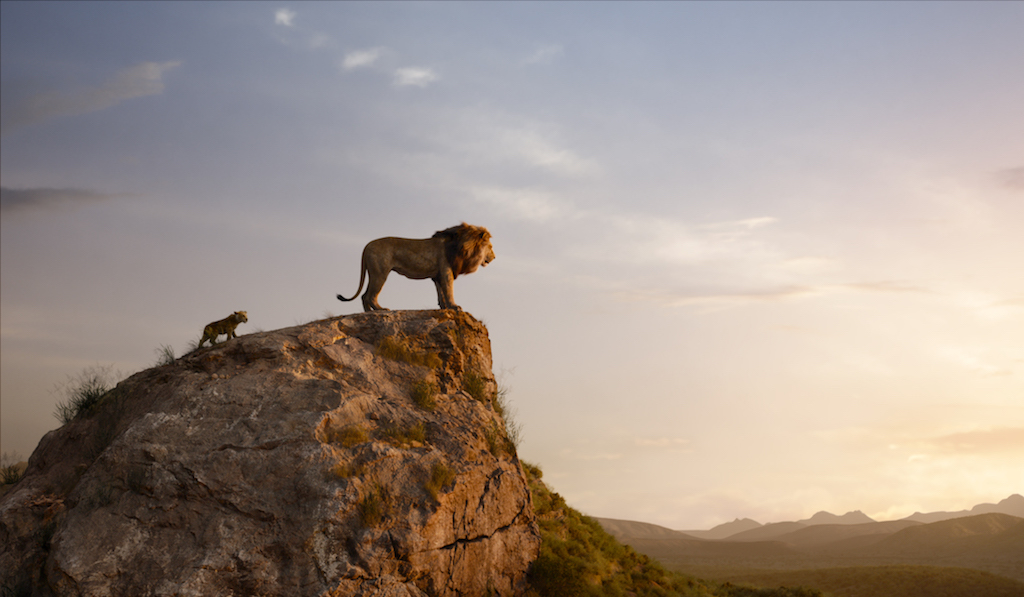
Just because you can do something, doesn’t mean you necessarily should do something. That was the thought I kept having as I watched Disney’s photo-realistic remake of their own The Lion King. Yes, we have reached a point with CGI technology where the lions look like real lions and the hyenas look like real hyenas and the crickets look like real crickets and the blades of grass really do seem to sway in the wind and the puddles of mud seem goopy and wet and the rocks seem craggy and dense. It’s impressive as hell—for a while at least. But at some point, a nagging question keeps coming up: Why?
The original The Lion King, from 1994, is a rightful classic, with a gorgeous hand-drawn animation that was blended with then-new CGI technology to create realistic (by animation standards) animals, heart-pulsing stampede scenes, and sweeping vistas. Throw in a wonderful plot about a young cub losing his king father and fulfilling his destiny, some memorable Disney villains and sidekicks, and Elton John’s ace score, and it’s no wonder the film became a global hit. It spawned a Broadway show, that combined the songs and story of the movie with the visionary genius of Julie Taymor.
“Vision” is a key word here, because that’s what missing in this remake. As directed by Jon Favreau, it’s an achievement of technology not artistry. Indeed, it’s a downright slavish imitation of the original, with a few notable deficiencies: For one, as incredible as this CGI is, they still haven’t quite mastered the facial expressions of the talking animals. I guess you have to sacrifice one for the either: Either you get a lion that looks just like a lion or you get a lion that can sneer and laugh and cry. Also, when I think of the animated The Lion King, I think of all those beautiful, rich hues—the caramel colored lions, the deep sunrises, the black-blue night sky. Here, there’s often a dingy grayness to the proceedings, particularly in scenes toward the end that take place in the rain.
So what works? Well, lots of course. It’s still a great story with great music. And the cast is pretty great, too. John Oliver is a particularly pleasant surprise as the hornbill Zazu, who is assigned by the lion king Mufasa (James Earl Jones, reprising his role from the original) to look over the cubs Simba and Nala. Who knew the satirical news host could act? Seth Rogen and Billy Eichner provide a nice dose of comic relief as the “Hakuna Matata” duo themselves, Pumbaa and Timon (even if Rogen can’t really—what’s the word I’m looking for?—”sing”). As Scar, Chewitel Ejiofor treats the material like he’s doing Shakespeare, so let it never be said that he plays down to the material. And an electric wave of excitement coursed through my audience when Beyoncé’s voice was first heard as the grownup version of Nala (they even wrote an extra song just for her—a generic, gospel-tinged number called “Spirit”—because what are you going to do, not give Beyoncé a solo?). The ever-likeable Donald Glover makes for a solid grown-up Simba.
What can I say? The Lion King is good because, well, The Lion King is good. But the original was a work of artistry and genius. This is a work of mimicry. So let’s just call it what it is: A cash grab by Disney that will make them . . . hundreds of millions of dollars. Dammit, foiled again.
